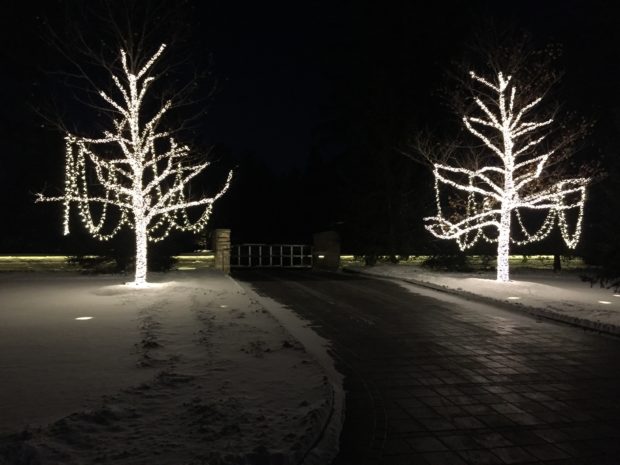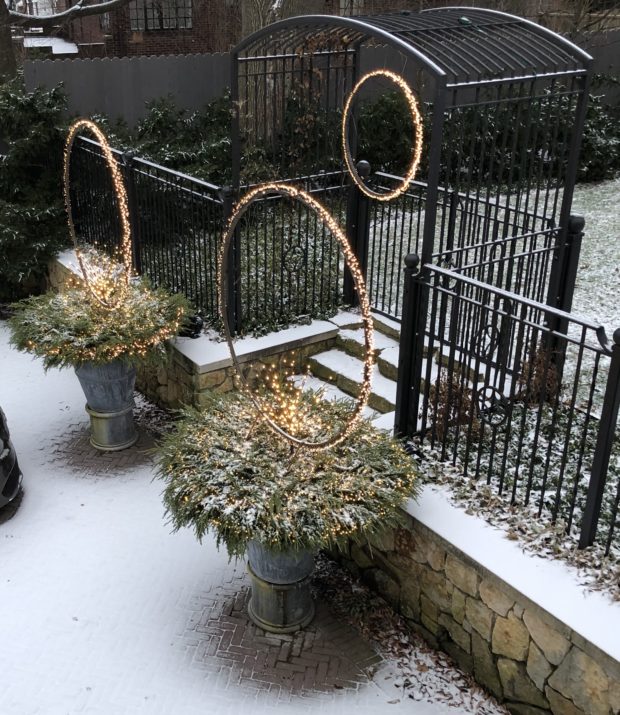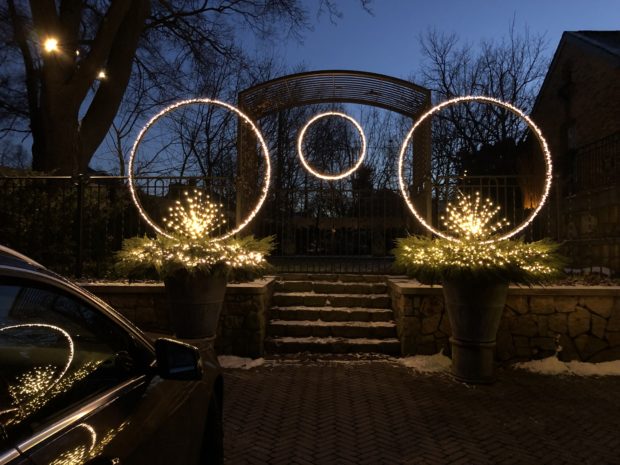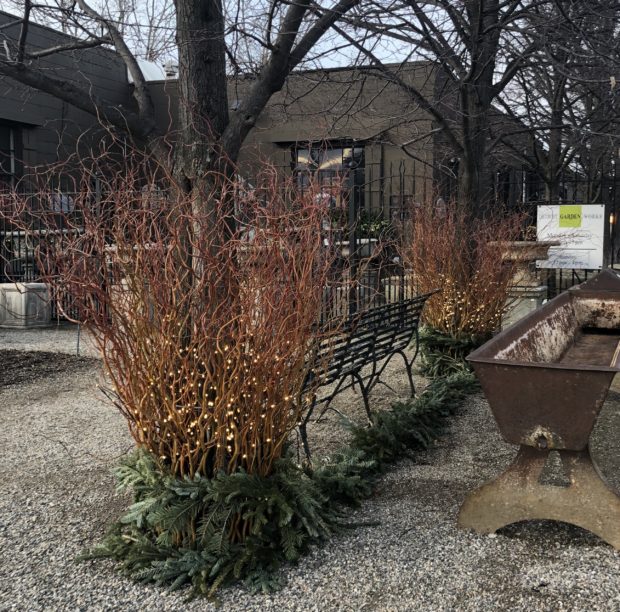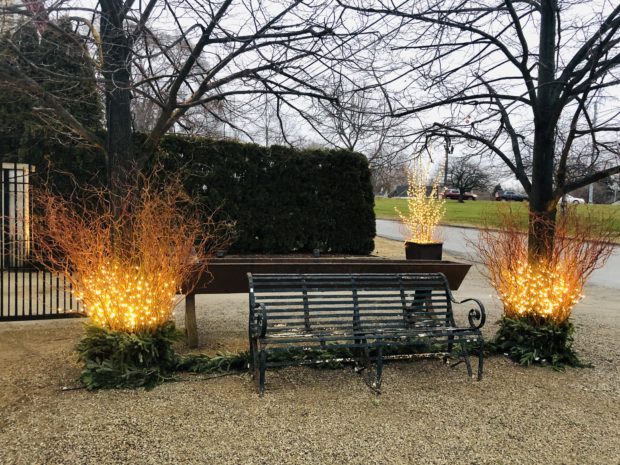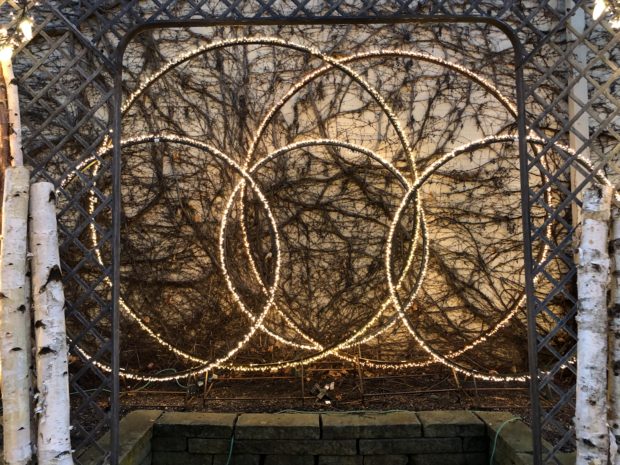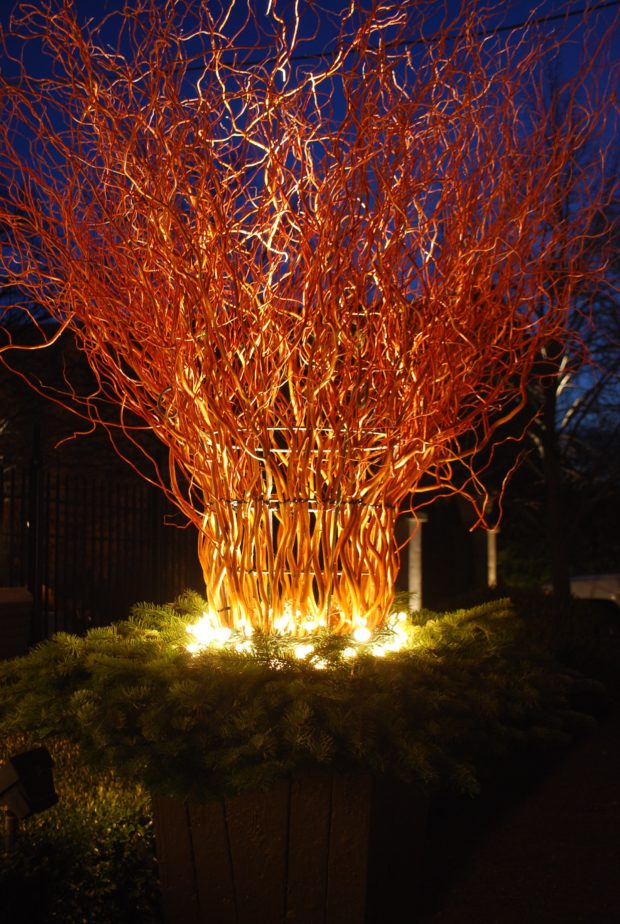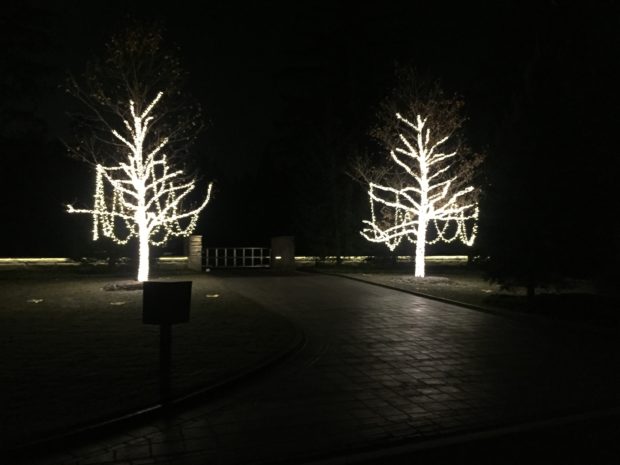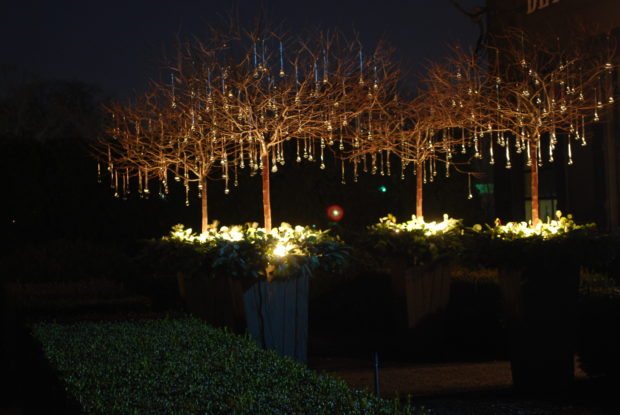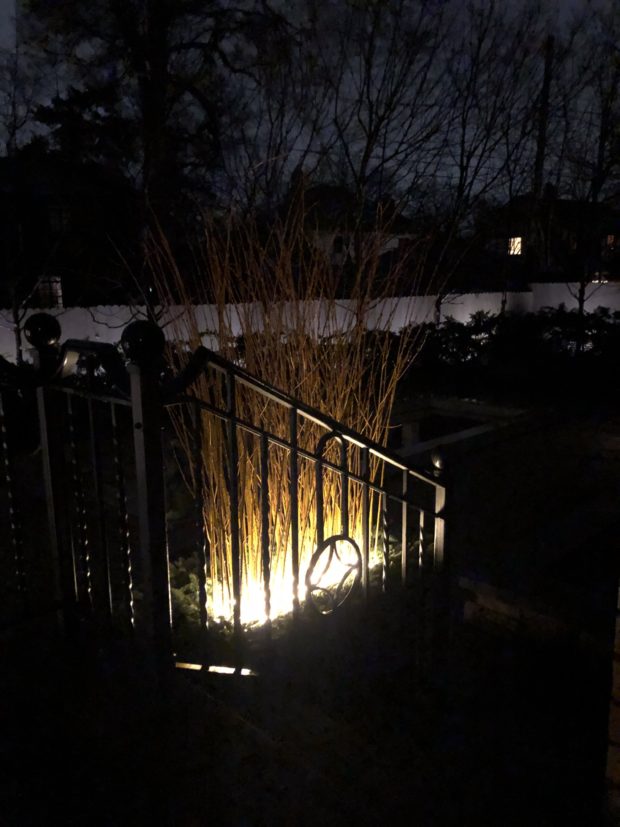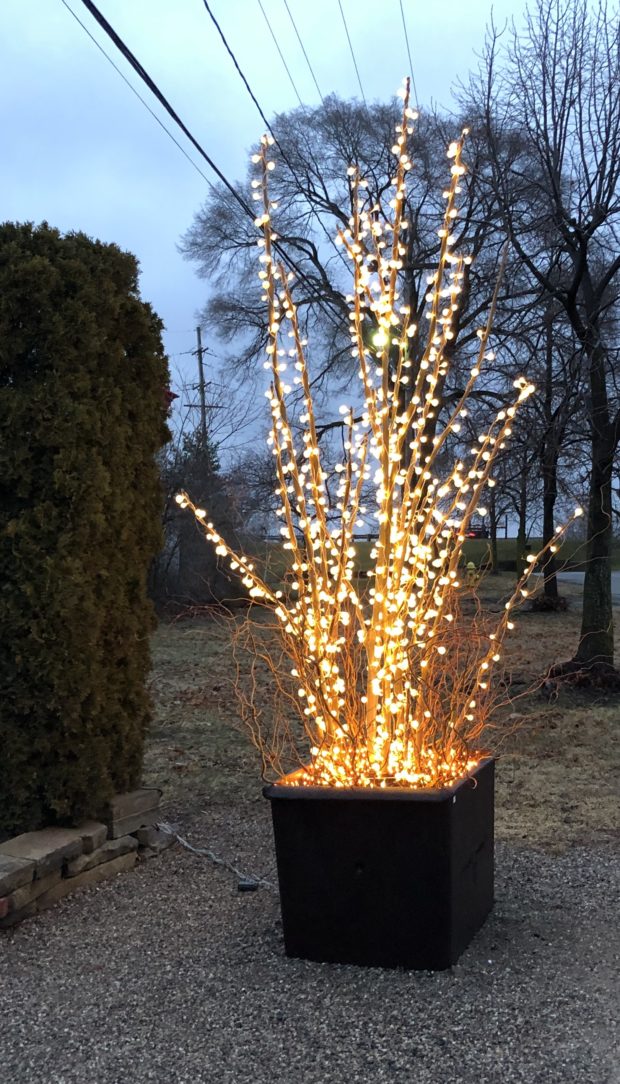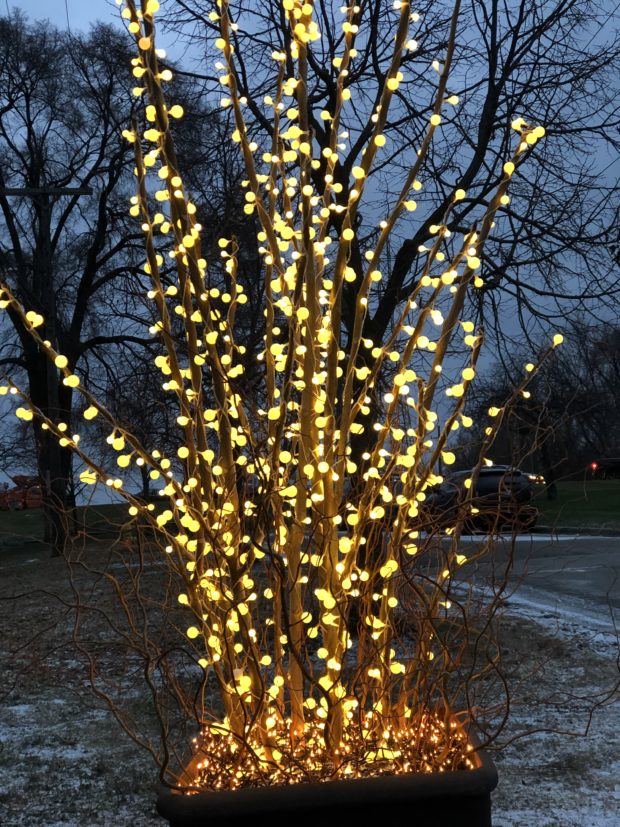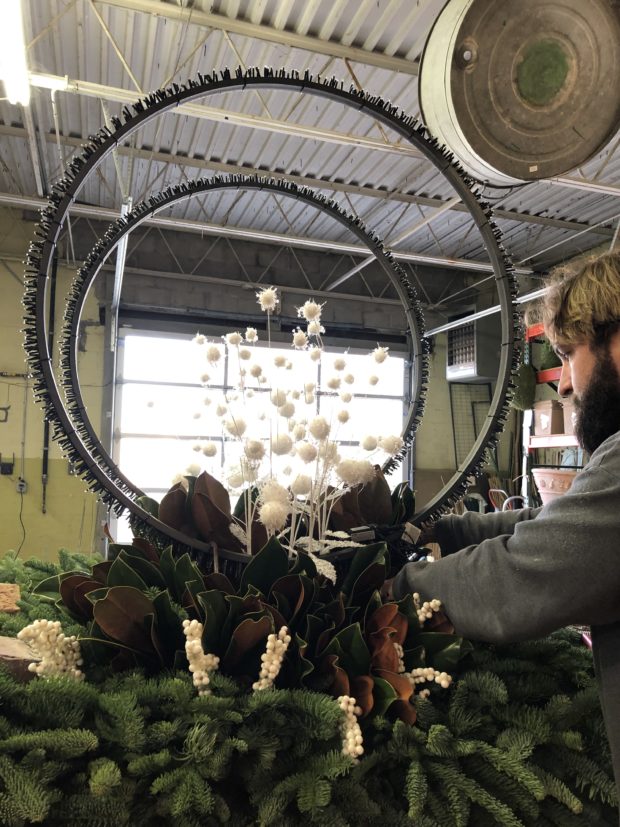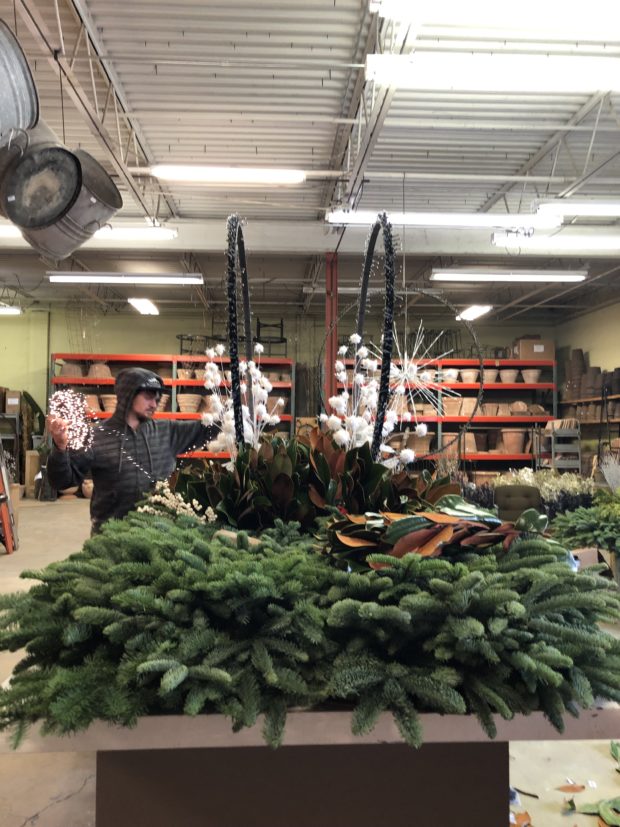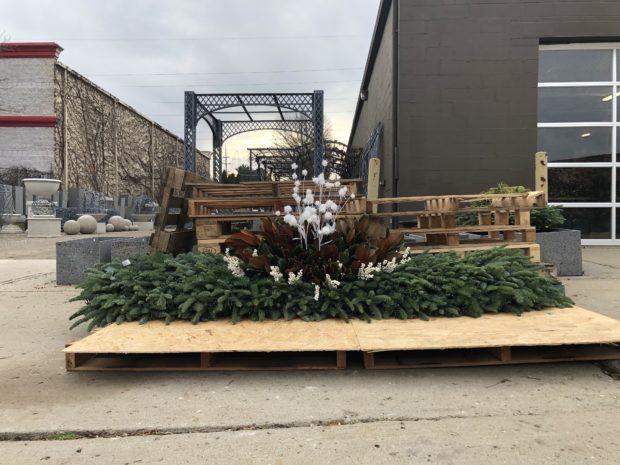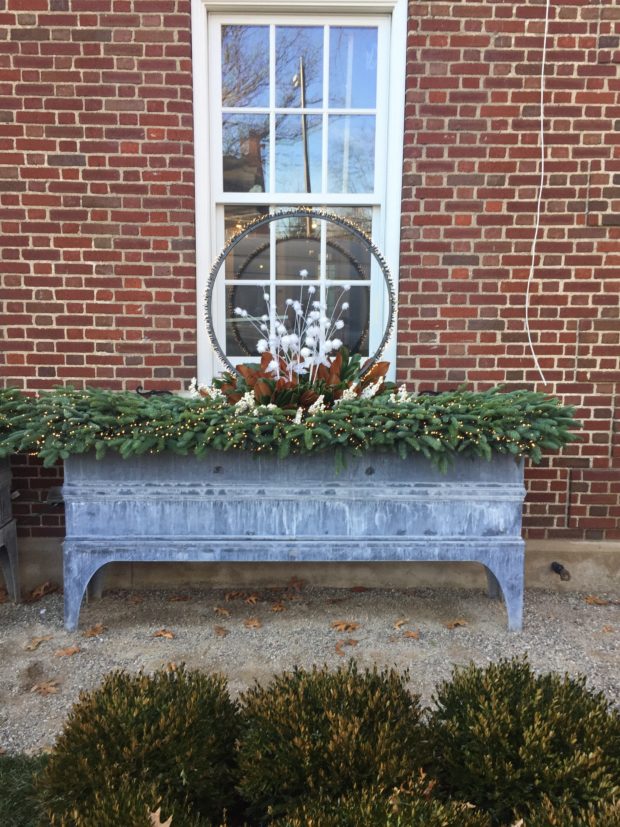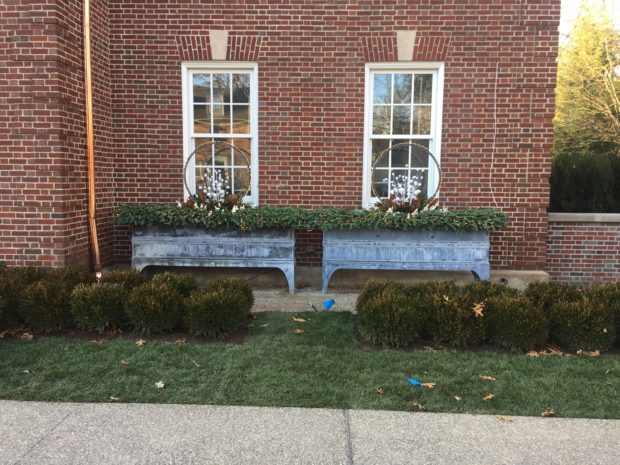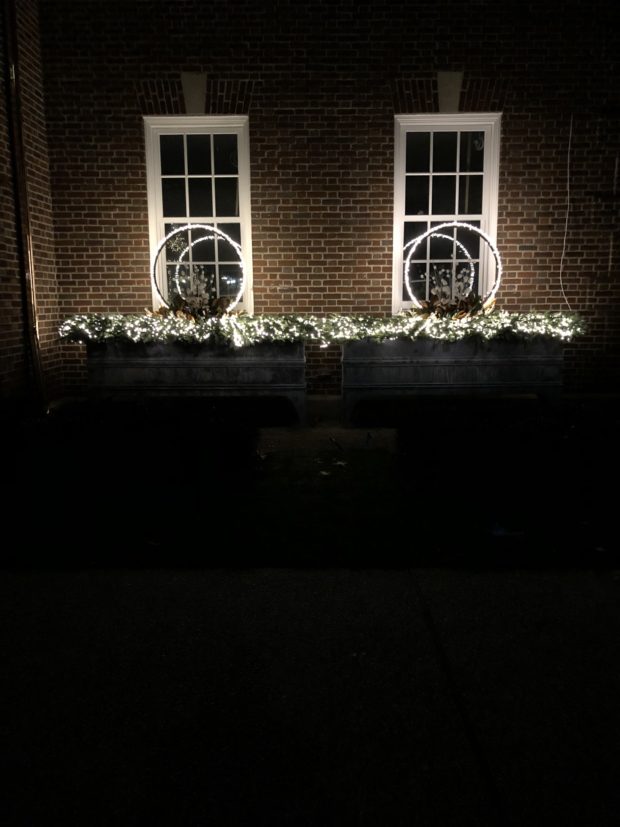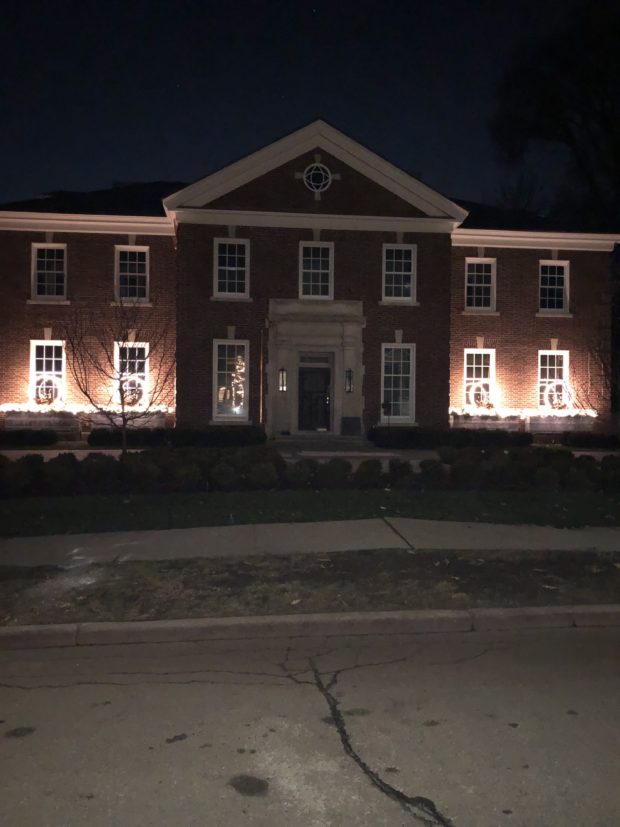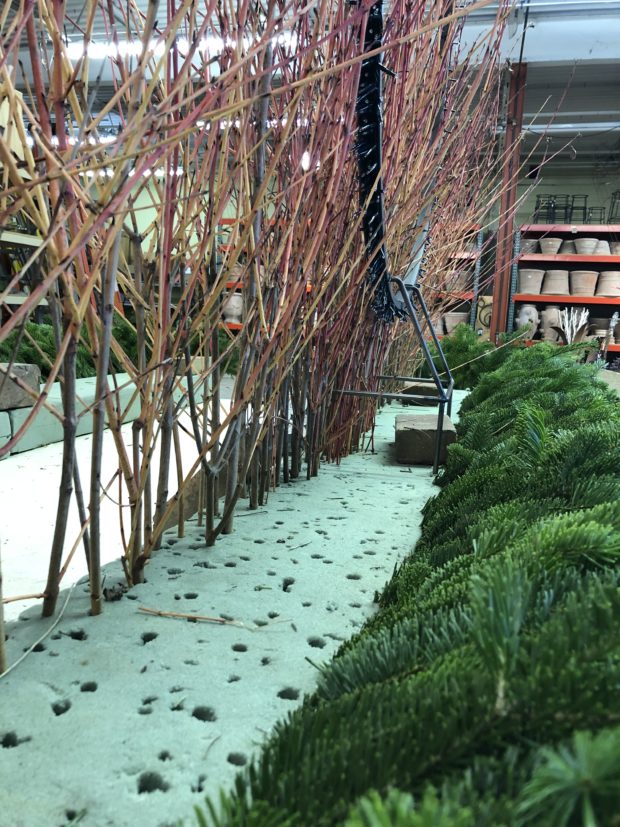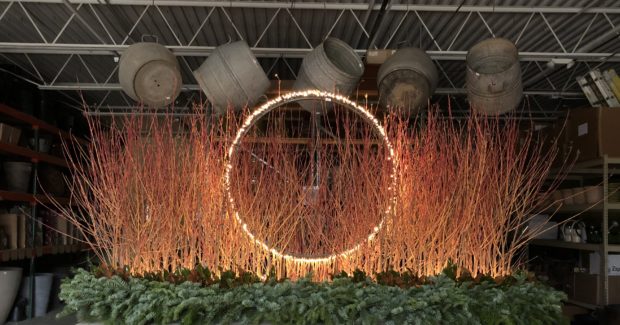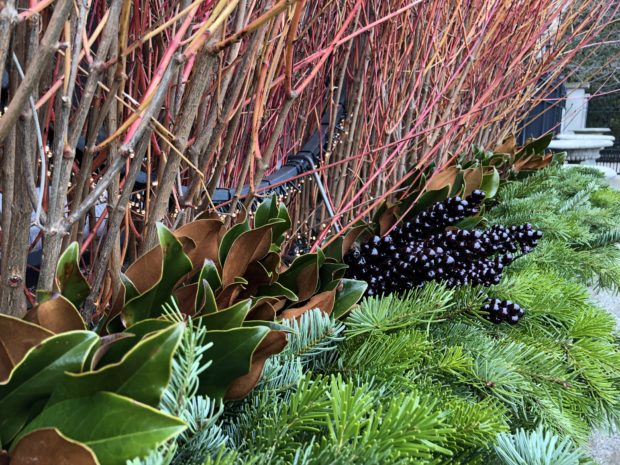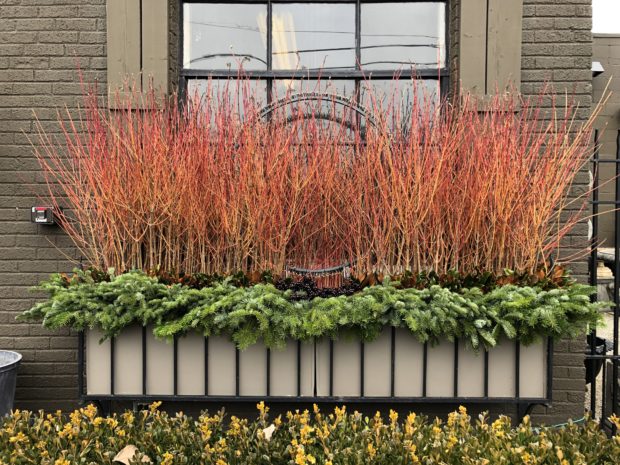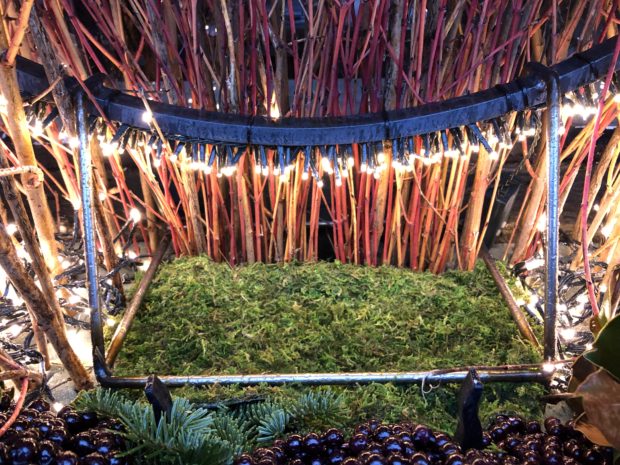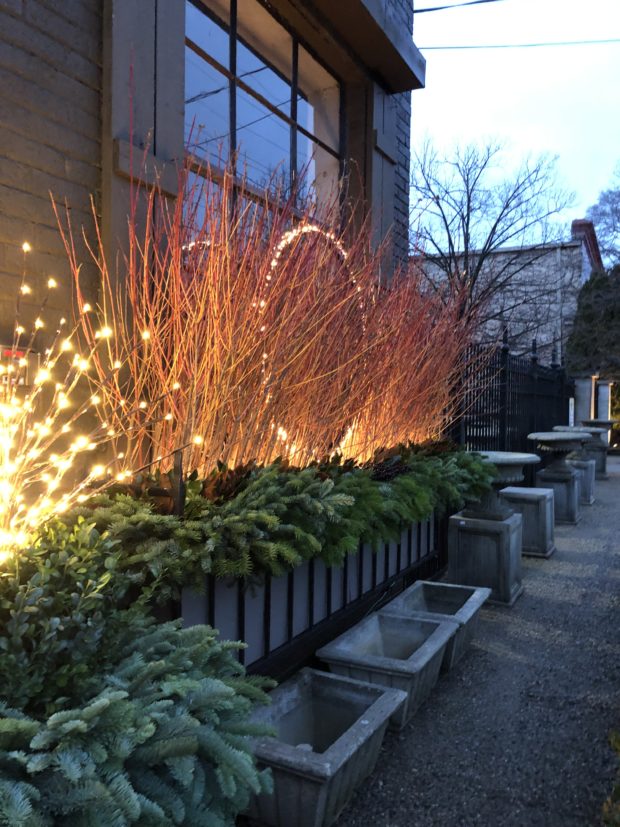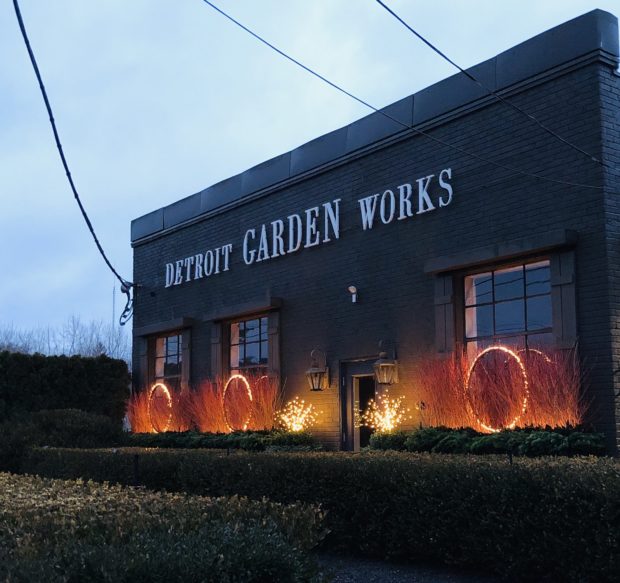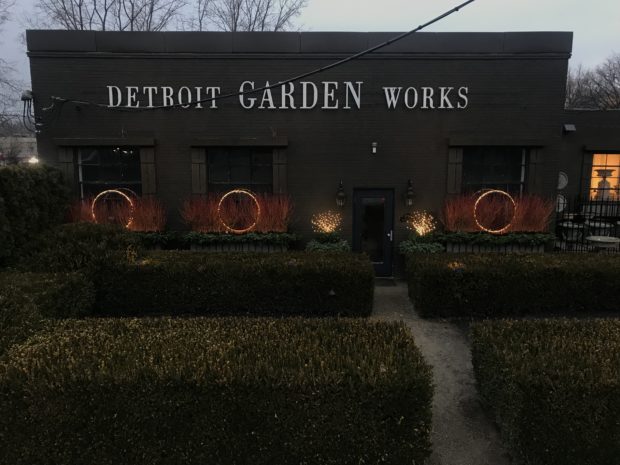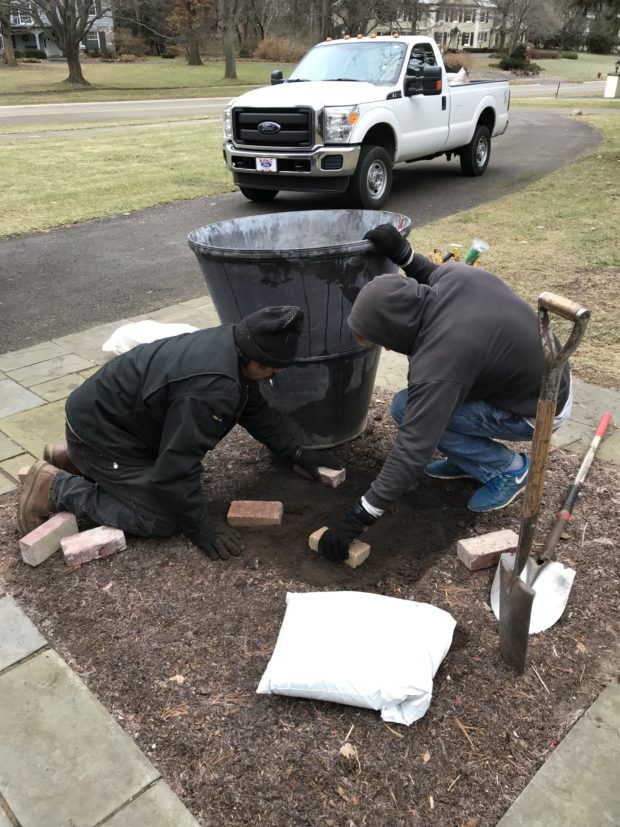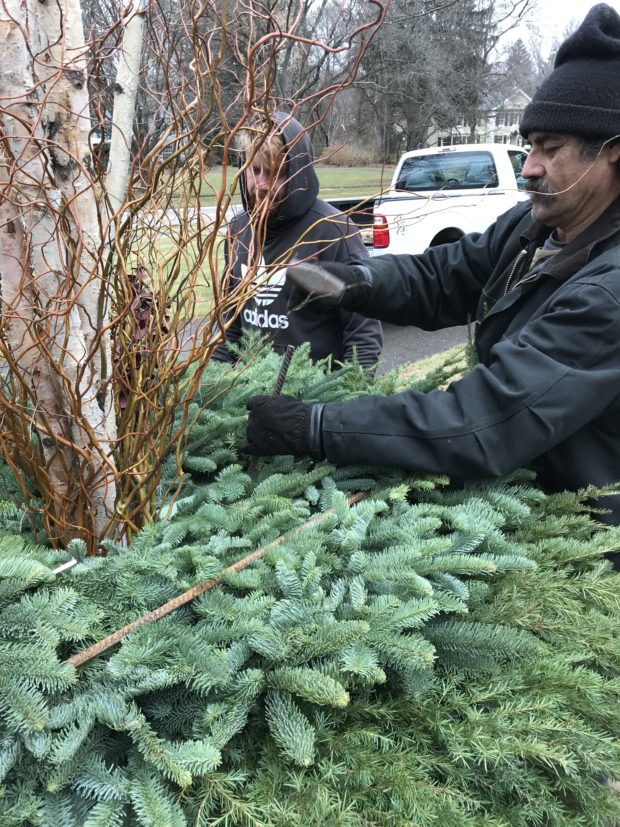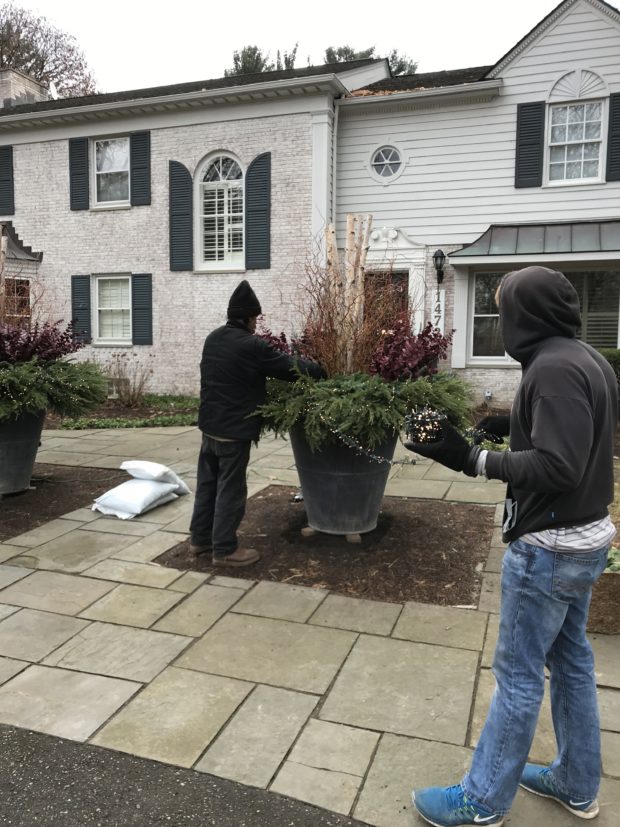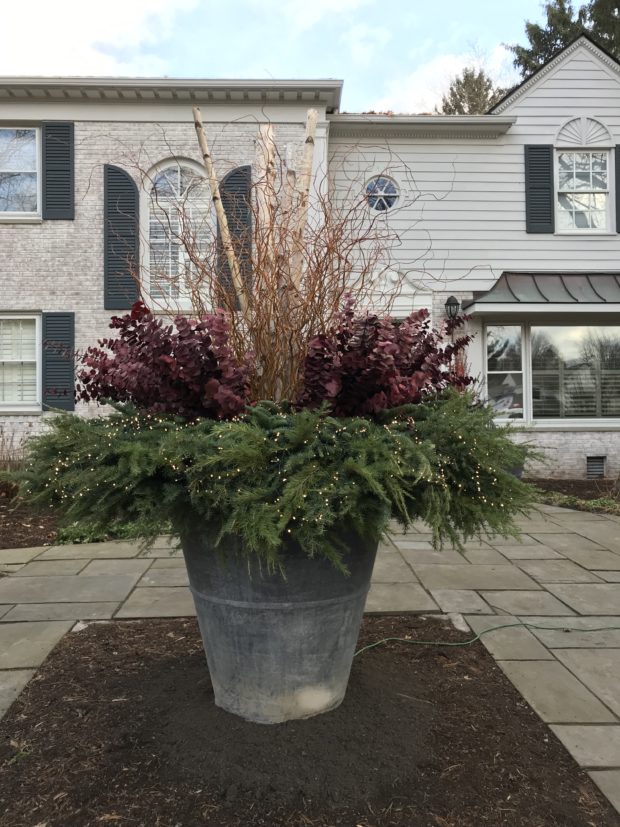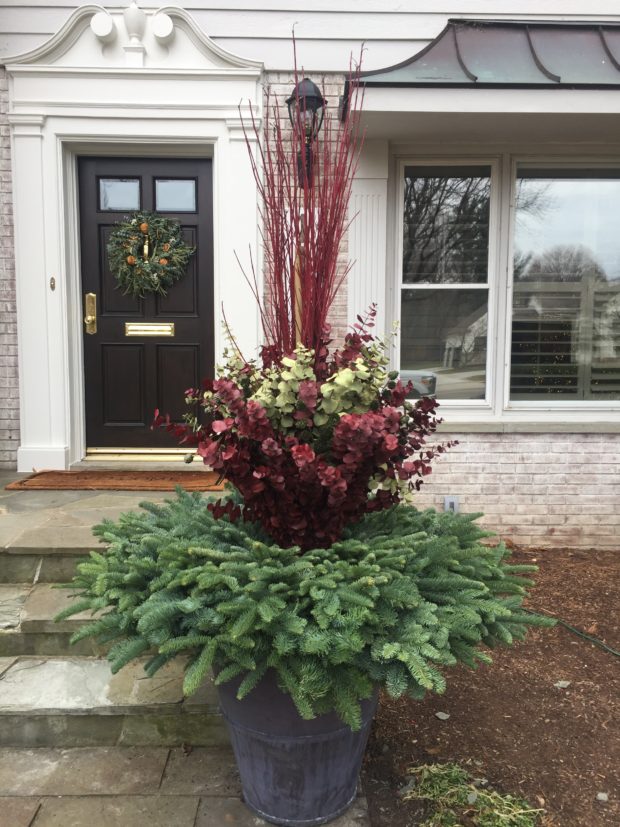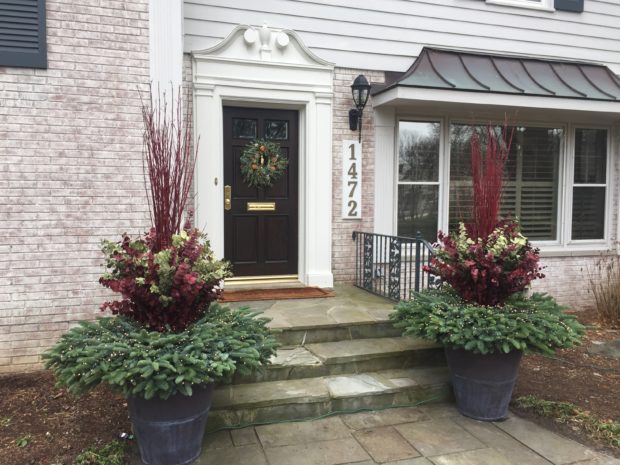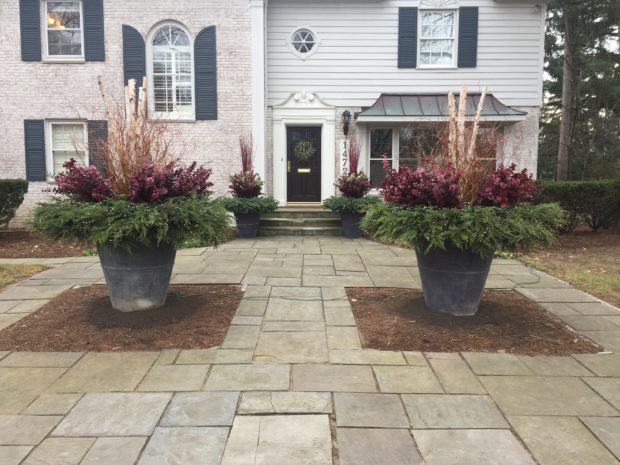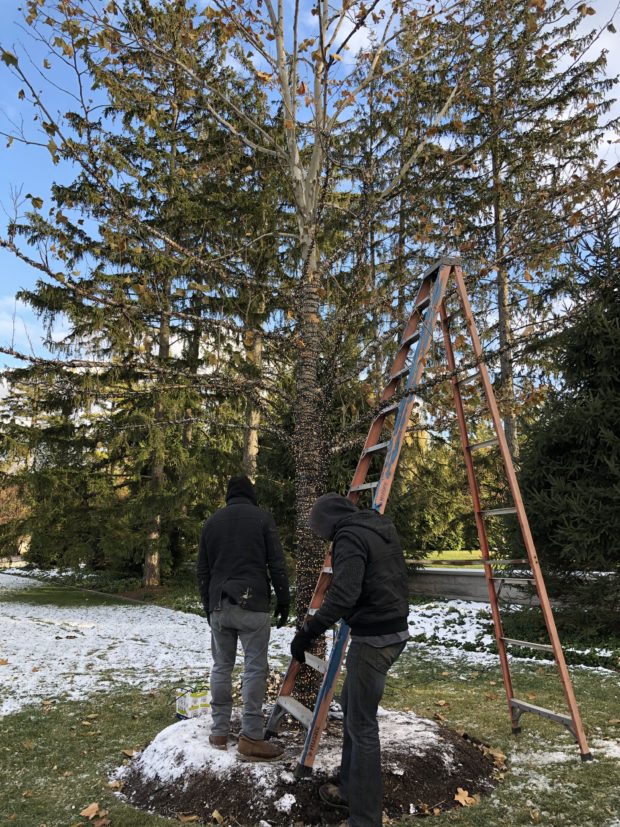 A client asked of we would be able to light a pair of London Plane trees that we planted on either side of her driveway near the road – for the winter season. Of course I said yes. But I should back up. To say that we planted them warrants further explanation. I asked Ralph Plummer, owner of GP Enterprises, to locate, secure and plant a pair of London Planes of substantial size at the street entry of a landscape I designed and installed.
A client asked of we would be able to light a pair of London Plane trees that we planted on either side of her driveway near the road – for the winter season. Of course I said yes. But I should back up. To say that we planted them warrants further explanation. I asked Ralph Plummer, owner of GP Enterprises, to locate, secure and plant a pair of London Planes of substantial size at the street entry of a landscape I designed and installed.
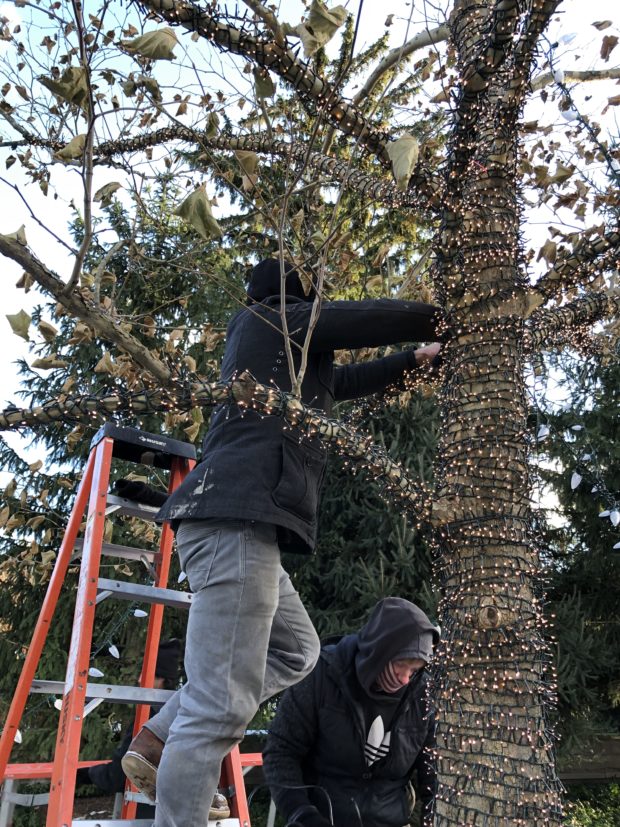 He obliged with a pair of eight inch caliper Planes that topped out at nearly 30 feet tall. I like big elements in the foreground of a landscape composition. That size is a request to focus and a visual invitation. These giant trees frame the view ahead. I had been absorbed with the installation inside the gates. My client made a request to me for a pair of big framing trees outside those gates. I can assure you flat out that my best projects as a designer have a committed and passionate client as a partner.
He obliged with a pair of eight inch caliper Planes that topped out at nearly 30 feet tall. I like big elements in the foreground of a landscape composition. That size is a request to focus and a visual invitation. These giant trees frame the view ahead. I had been absorbed with the installation inside the gates. My client made a request to me for a pair of big framing trees outside those gates. I can assure you flat out that my best projects as a designer have a committed and passionate client as a partner.
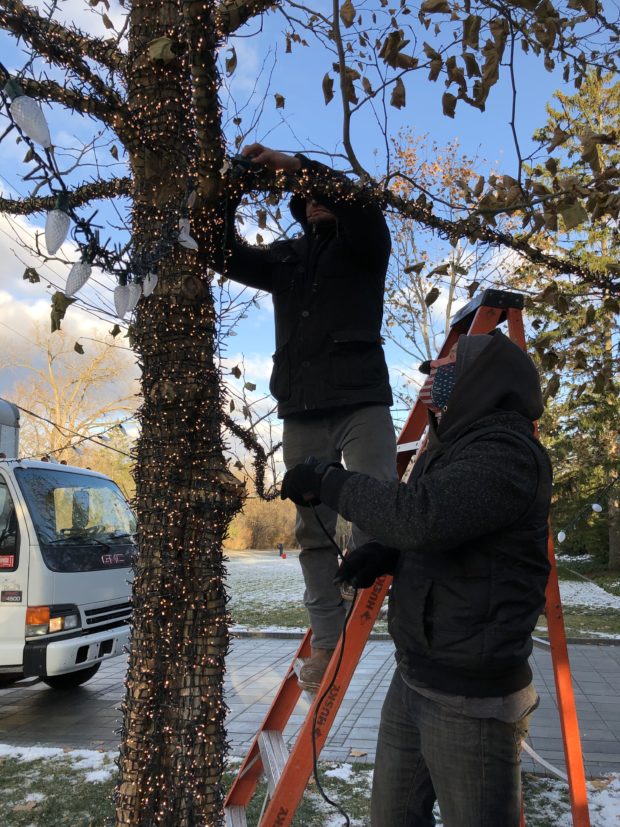 So back to the lighting of these trees. Of course Rob backed us up at Detroit Garden Works with LED compact string lighting strands that were 110 feet in length, and featured 2000 lights each. We wound the trunks and major branches horizontally with these strands – lots of them. This day in November was 20 degrees. The weather was an enormous challenge to the work, but that is not news where gardening is concerned.
So back to the lighting of these trees. Of course Rob backed us up at Detroit Garden Works with LED compact string lighting strands that were 110 feet in length, and featured 2000 lights each. We wound the trunks and major branches horizontally with these strands – lots of them. This day in November was 20 degrees. The weather was an enormous challenge to the work, but that is not news where gardening is concerned.
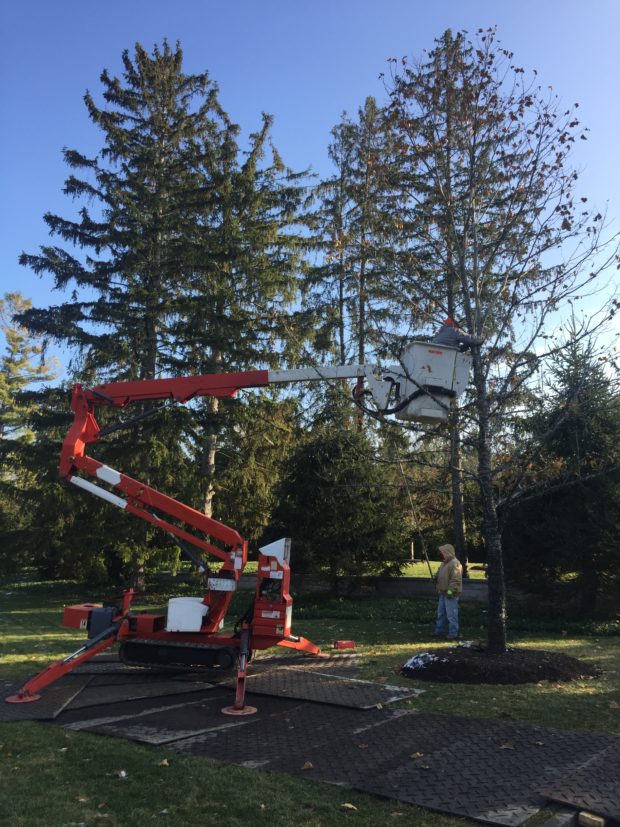 Our lighting via ladders took us up close to 20 feet. My client called to ask when were we coming back to do the rest? I should have known that the limit of our reach on our ladders was a self imposed limit. If the sky was the limit, I was going to need some help. Mike Shecter sent two of his people over with a lift. That machine enabled them to wrap both of the trees much closer to the top.
Our lighting via ladders took us up close to 20 feet. My client called to ask when were we coming back to do the rest? I should have known that the limit of our reach on our ladders was a self imposed limit. If the sky was the limit, I was going to need some help. Mike Shecter sent two of his people over with a lift. That machine enabled them to wrap both of the trees much closer to the top.
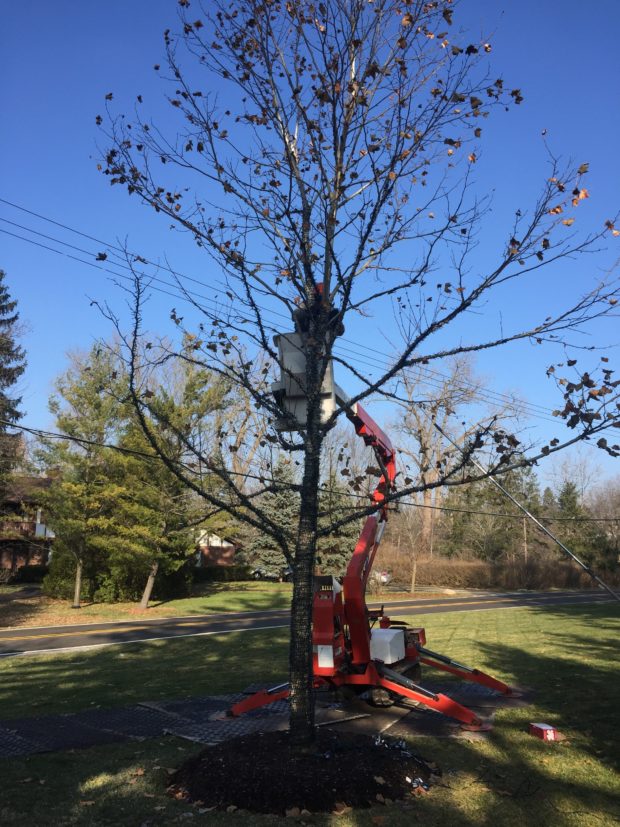 There are a few landscape companies in my area that offer holiday lighting, but that is a very specialized niche. The purchase and maintenance on a piece of equipment like this has to be very expensive. Not to mention the workman’s compensation policy on people who are working this high off the ground. I was happy to get some help with this project, and even happier that I do not own this machine.
There are a few landscape companies in my area that offer holiday lighting, but that is a very specialized niche. The purchase and maintenance on a piece of equipment like this has to be very expensive. Not to mention the workman’s compensation policy on people who are working this high off the ground. I was happy to get some help with this project, and even happier that I do not own this machine.
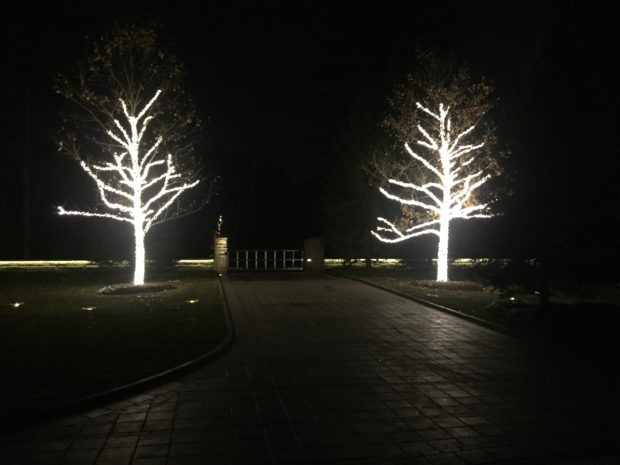 Trees densely wound round with lights is not especially unusual. Many commercial businesses feature very elaborate lighting schemes for the holiday season. I understand why. The light is dazzling, and uplifting. As in festival of lights. As much as I loved this look, something was missing.
Trees densely wound round with lights is not especially unusual. Many commercial businesses feature very elaborate lighting schemes for the holiday season. I understand why. The light is dazzling, and uplifting. As in festival of lights. As much as I loved this look, something was missing.
 We put together a pair of light garlands in our shop, featuring 100 feet of LED compact lighted zip tied to a corresponding length of LED strands with the larger C-7 size bulbs. As there was no way to draw or describe the installation of the garland, I was part of the install crew. We laid the garland on the ground, and dragged and pulled it until it described a large circle on the ground all around each tree. A ladder, a 6′ 2″ tall person, a 10 foot bamboo stake with a hook at the top, and 4 support people were all we had in the way of equipment.
We put together a pair of light garlands in our shop, featuring 100 feet of LED compact lighted zip tied to a corresponding length of LED strands with the larger C-7 size bulbs. As there was no way to draw or describe the installation of the garland, I was part of the install crew. We laid the garland on the ground, and dragged and pulled it until it described a large circle on the ground all around each tree. A ladder, a 6′ 2″ tall person, a 10 foot bamboo stake with a hook at the top, and 4 support people were all we had in the way of equipment.
 The lowest point of each loop/swoop is just about 6′ 2″ above the ground. It was easy to have Colin stand underneath the loops so we knew how low to make them. As bright as they are at night, these lights are a little tough to see during the day. The tops of the loops were secured to lighted branches via a zip tie. Having learned this the hard way, I would recommend tagging the ends of each strand of lights with its own zip tie. The technology of these lights is amazing, but they are by no means perfect or foolproof. If you have a strand go out that cannot be fixed with a new transformer, you want to know the location of the end of that faulty strand. Trying to find it on a cold winter’s day is exasperating, especially considering that this work is next to impossible to do with gloves on.
The lowest point of each loop/swoop is just about 6′ 2″ above the ground. It was easy to have Colin stand underneath the loops so we knew how low to make them. As bright as they are at night, these lights are a little tough to see during the day. The tops of the loops were secured to lighted branches via a zip tie. Having learned this the hard way, I would recommend tagging the ends of each strand of lights with its own zip tie. The technology of these lights is amazing, but they are by no means perfect or foolproof. If you have a strand go out that cannot be fixed with a new transformer, you want to know the location of the end of that faulty strand. Trying to find it on a cold winter’s day is exasperating, especially considering that this work is next to impossible to do with gloves on.
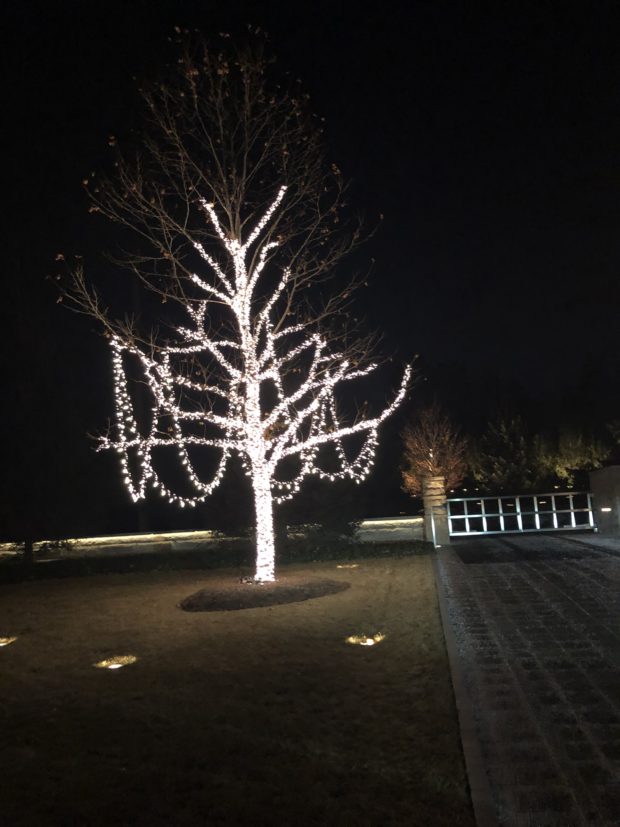 The gardens added a whole other dimension to the lighting scheme. What was impressive in its scope was now a jewel in the landscape. They have that aura of romance.
The gardens added a whole other dimension to the lighting scheme. What was impressive in its scope was now a jewel in the landscape. They have that aura of romance.
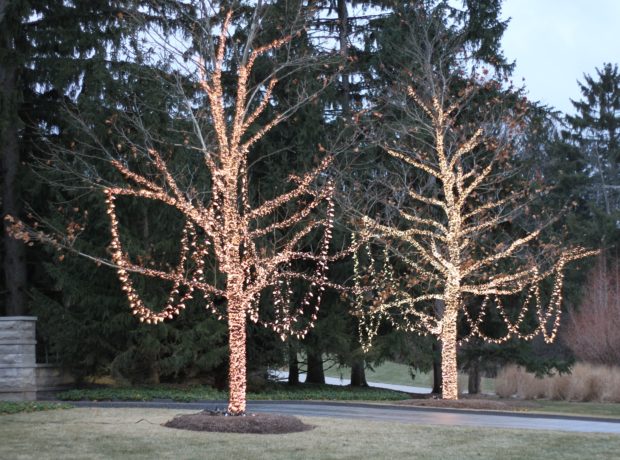 I posted this picture that David took the other morning at 8am on instagram. Landscape designer Susan Cohan commented: “Cinderellas!” What a wonderful way to describe them! Though London Planes are stately trees with gorgeous exfoliating bark and luxuriously large leaves, dressed in lights and wreathed in garlands, they are the stuff of fairy tales. Wrought from a very static and hard material, the effect is graceful and dressy.
I posted this picture that David took the other morning at 8am on instagram. Landscape designer Susan Cohan commented: “Cinderellas!” What a wonderful way to describe them! Though London Planes are stately trees with gorgeous exfoliating bark and luxuriously large leaves, dressed in lights and wreathed in garlands, they are the stuff of fairy tales. Wrought from a very static and hard material, the effect is graceful and dressy.
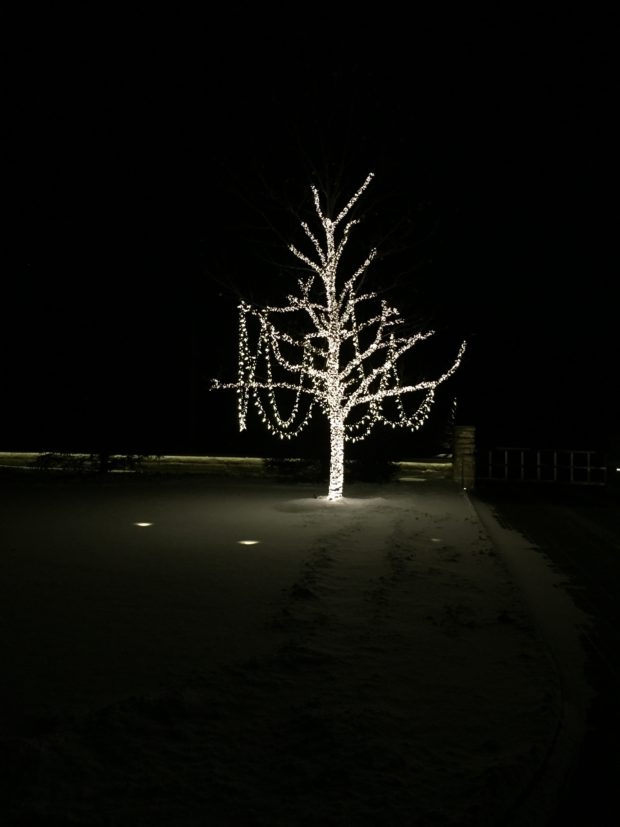 The snow a couple days ago adds yet another dimension-the warm fire contrasting with the cold ice and snow. Winter lighting and weather play off one another in a way that provides a lot of visual punch while the garden is dormant. They shine forth on all but the sunniest winter days. As sunny winter days are few and far between in my zone, I would not do without the lighted winter landscape.
The snow a couple days ago adds yet another dimension-the warm fire contrasting with the cold ice and snow. Winter lighting and weather play off one another in a way that provides a lot of visual punch while the garden is dormant. They shine forth on all but the sunniest winter days. As sunny winter days are few and far between in my zone, I would not do without the lighted winter landscape.
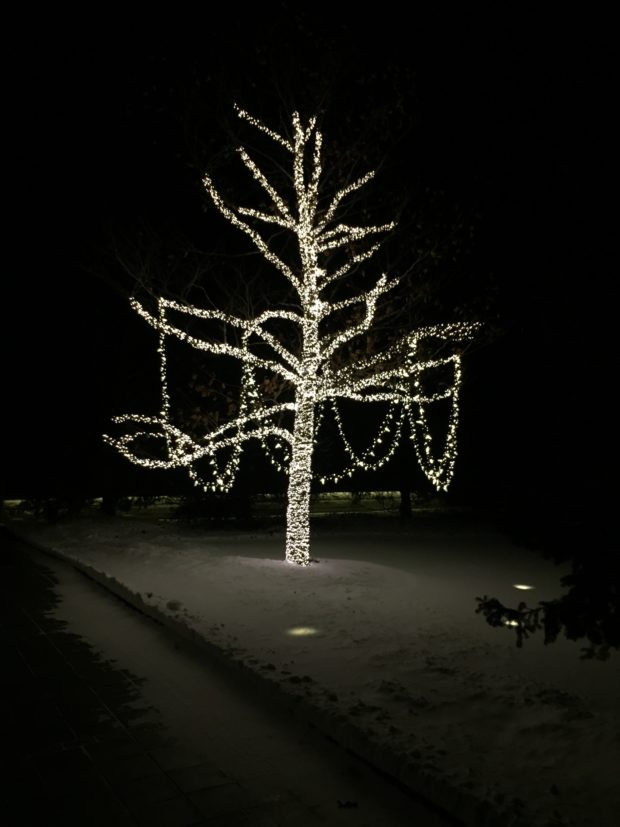 Several of these pictures were taken by my client. I know she is enjoying them.
Several of these pictures were taken by my client. I know she is enjoying them.
